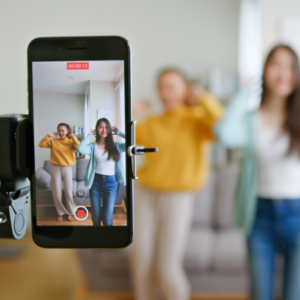Introduction
TikTok, one of the world’s most popular social media platforms, is facing growing criticism over its alleged adverse effects on young users. Recently revealed documents from a lawsuit filed by the Kentucky Attorney General claim that TikTok’s executives and employees are fully aware of the addictive nature of the app and its detrimental impacts on mental health. Consequently, these allegations have intensified discussions about the role of social media in shaping youth behavior and mental well-being. In this article, we will delve into the key findings, concerns, and TikTok’s response to the accusations.
Allegations of Mental Health Risks
The lawsuit presents alarming evidence about TikTok’s internal research, which links compulsive usage to various negative mental health outcomes. These include:
- Cognitive Impairments: Loss of analytical abilities, weakened memory formation, and diminished contextual thinking.
- Emotional Distress: Increased anxiety and a notable decline in empathy.
- Lifestyle Disruptions: Negative impacts on sleep quality, school performance, work productivity, and interpersonal relationships.
Kentucky Attorney General Russell Coleman has accused TikTok of deliberately exploiting children’s underdeveloped self-control mechanisms, describing the app as an “addiction machine” designed to maximize engagement at the cost of mental well-being. According to Coleman, these practices are not accidental but a calculated part of TikTok’s design strategy.
Ineffectiveness of Screen Time Tools
One of TikTok’s main safety features—a ‘time management’ tool that limits daily usage to 60 minutes by default—has faced criticism for its ineffectiveness. In fact, internal data reveals that young users spend an average of 107 minutes daily on the platform, which represents only a marginal decrease of 1.5 minutes from the 108.5-minute average recorded before the tool’s implementation.
Furthermore, leaked internal communications suggest that TikTok viewed the tool more as a public relations effort than a genuine solution. The company’s documents reportedly outlined success metrics for the feature based on ‘increased public trust,’ rather than measurable reductions in screen time. As a result, this revelation raises serious concerns about the platform’s true commitment to user well-being.
The Dangers of “Filter Bubbles”
Another significant concern is TikTok’s awareness of the risks posed by “filter bubbles,” which the platform’s algorithm creates by narrowing content streams. Internal research shows that users can encounter harmful content within just 30 minutes of following specific accounts. Examples of such content include:
- “Painhub” and “Sadnotes”: Accounts focusing on themes of pain and sadness.
- “Thinspiration”: Content that promotes unhealthy body standards and eating disorders.
TikTok’s algorithm prioritizes engagement, which inadvertently amplifies these filter bubbles. This seriously risks young users, who may immerse themselves in content streams that promote unhealthy behaviors and reinforce negative emotions.
Failures in Content Moderation
The lawsuit also highlights TikTok’s shortcomings in content moderation. Investigations revealed several troubling issues, including:
- Inappropriate Live Streams: Instances of underage girls engaging in inappropriate behavior during live broadcasts in exchange for virtual gifts.
- Harmful Content: Videos promoting pedophilia, underage abuse, and physical violence passing through moderation systems.
- Neglect of Underage Accounts: Allegations that TikTok’s management instructed moderators not to remove accounts of users under 13 unless their age was explicitly verified.
These failures suggest systemic weaknesses in TikTok’s content monitoring processes, which leave vulnerable users exposed to exploitation and harm.
TikTok’s Defense and Safety Measures
TikTok’s spokesperson, Alex Haurek, has denied the allegations, arguing that the lawsuit relies on outdated and selectively quoted documents. According to Haurek, TikTok is committed to user safety and has implemented a range of measures to protect young users, including:
- Proactive Account Removal: Suspected underage users are regularly removed from the platform.
- Enhanced Privacy Settings: Default privacy settings for users under 16 limit exposure to potential risks.
- Screen Time Controls: Features like screen time limits and the “Family Pairing” tool give parents greater oversight of their children’s app usage.
Despite these measures, critics argue that they fall short of addressing the core issues, as the platform’s design continues to prioritize engagement over safety.
Broader Implications for Social Media
The controversy surrounding TikTok underscores a broader issue: the responsibility of social media platforms in safeguarding their users, particularly vulnerable groups like children and teenagers. The revelations about TikTok highlight the need for stricter regulations, improved safety features, and greater transparency from tech companies.
Parents and educators must remain proactive in educating young users about healthy digital habits. Policymakers, meanwhile, should push for accountability and enforce measures that prioritize user well-being over corporate profits.


